Just a blog with the thoughts, experiences, and occasional advice of a horticulture student
Last active 60 minutes ago
Don't wanna be here? Send us removal request.
Text
I was gonna say this on the "right to garden" post that attracted a bunch of aggression, but instead, I deleted the post to maintain internal peacefulness
However I still think its worth saying this about invasive plant laws
Governments enact laws that forbid selling and importing plants that are designated "invasive species." It is, in fact, already legal to have invasive species on your property and even to plant them, if that were necessary (it usually isn't)
Plants are not designated "invasive" until they have basically completely overtaken the landscape. This means that by the time a plant is illegal for a nursery to sell, it's already too late, probably decades too late.
Example: Bradford pears (Pyrus calleryana---'Bradford' is actually a cultivar name, but it has become the most familiar common name for the entire species, which includes other cultivars such as 'Cleveland.') They were first noted on internet forums as naturalizing into a few abandoned fields in the 1990s. Now that it's the 2020s, laws are finally being passed against them.
This is good, at least it prevents nurseries from rolling out new cultivars of the species and scratches them off the list for landscaping contractors,
but on the level of an individual home owner, planting one Bradford pear does virtually nothing, because there are literally thousands of them in surrounding fields, fencelines and roadsides. Not that many people would even choose to do that in the first place, because everyone hates them now.
The problem is not people planting species that are known to be "invasive," because by the time we know they're invasive, they are already spreading themselves orders of magnitude faster than they can be intentionally planted. Pandora's box is already open.
The problem is introducing those species in the first place.
This means that effective legislation would have to target species that aren't invasive, but likely could become invasive.
And there's a problem: Invasive species often 'invade' long, long after their first introduction. Pyrus calleryana was being planted since the 1950's, and for several decades there it was well-behaved. This means that even non-native species that have been commonplace in horticulture for years would be targeted, because the switch could still flip.
Well, there's a lot of problems with this approach. How can we predict which species are likely to invade? This is sort of an unsolved problem in invasion biology. And if we restrict plants that have those "likely to invade" characteristics, big nurseries and retailers will switch to other plants, introducing even more exotic species, some of which will probably be able to become invasive.
A blanket ban on nurseries selling non-natives would require exhaustive lists of what plants are considered "native"---and would exclude most food plants, classic domesticated ornamental plants, and economically important plants. Next thing you know, no one in the USA can grow a peach or an apple or a lilac bush or a foxglove. That's totally silly.
So how can legislation help the problem of invasive plants? It would have to do so by encouraging native species, not necessarily targeting non-native species. Maybe retailers would have to stock native alternatives to every non-native ornamental species. Maybe there could be numeric limits on sales of non-native species so large contractors working on landscaping for housing developments would have to rely on native species.
But ultimately you would have to encourage more people to create their own gardens they enjoy, so they would gain the knowledge of plants and their relationships with other living things. Making it easier and more encouraged to garden is the best way to allow the public to become educated about nature.
245 notes
·
View notes
Text
Imagine if baking bread was a skill any person living independently in their own house needed to have at least a passing familiarity with, so there were endless books, blogs and websites about how to bake bread, but none of them seemed to contain the most basic facts about how bread actually works.
You would go online and find questions like "Help, I put my bread in the oven, and it GOT BIGGER!" and instead of saying anything about bread naturally rises when you put yeast in it, the results would be advertising some kind of $970 device that punches the bread while it's baking so it doesn't rise.
Even the most reliable, factually grounded sources available would have only the barest scraps of information on the particularities of ingredients, such as how different types of flour differ and produce different results, or how yeast affects the flavor profile of bread. Rice flour, barley flour, potato flour and amaranth flour would be just as common as wheat flour, but finding sources that didn't treat them as functionally identical would be near impossible. At the same time, websites and books would list specific brands of flour in bread recipes, often without specifying anything else.
An unreasonable amount of people would be hellbent on doing something like baking a full-sized loaf of bread in under 3 minutes, and would regularly bake bread to charred cinders at 700 degrees in an attempt to accomplish this, but instead of gently telling people that their goal is not realistic, books claiming to be general resources would be framed entirely around the goal of baking bread as fast as possible, with entire chapters devoted to making the charred bread taste like it isn't charred.
Anyway, this is what landscaping is like.
20K notes
·
View notes
Text
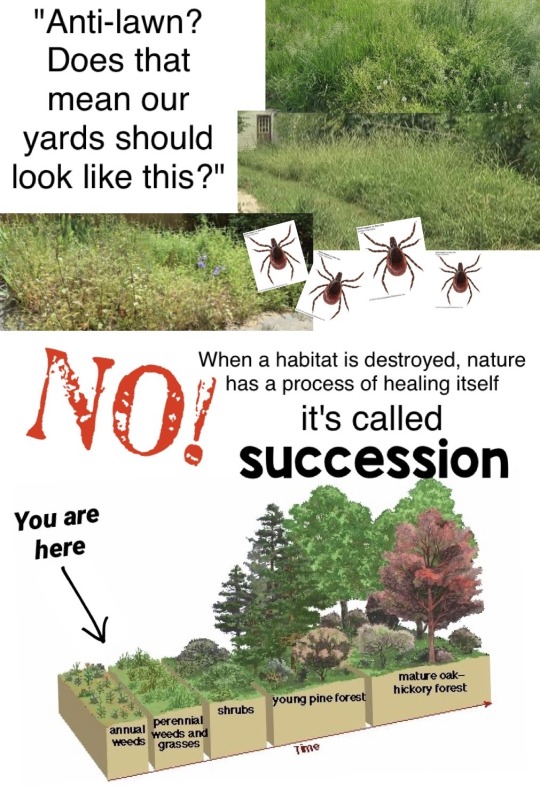
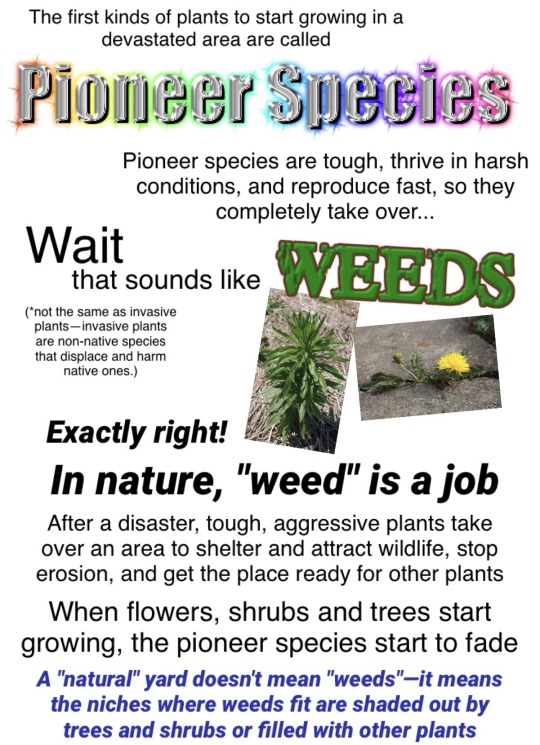
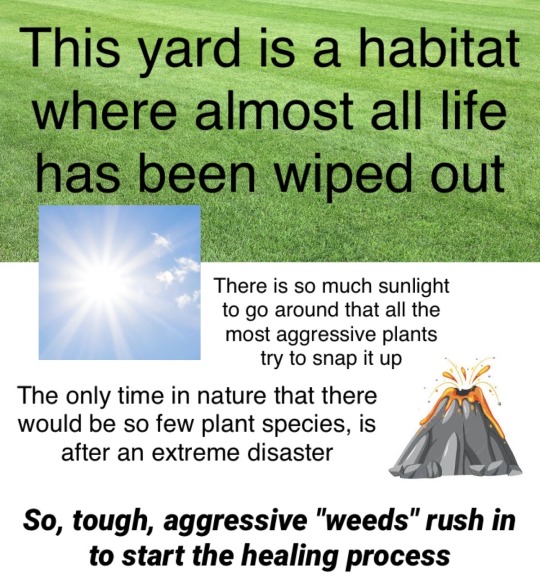
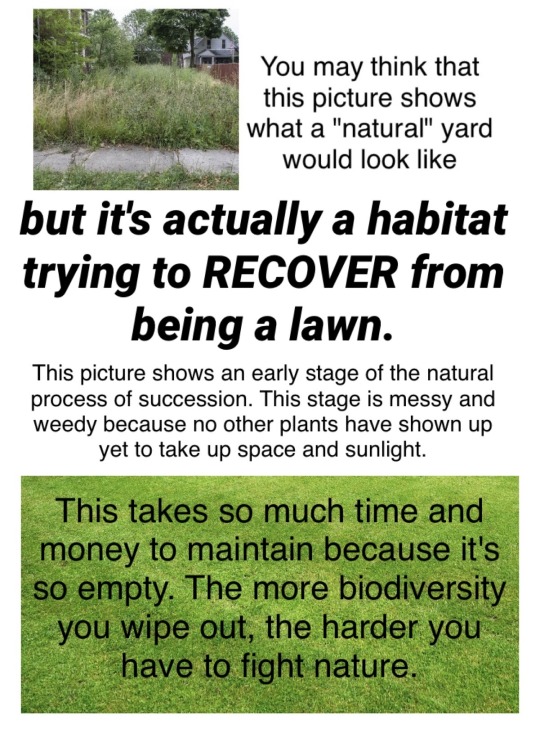
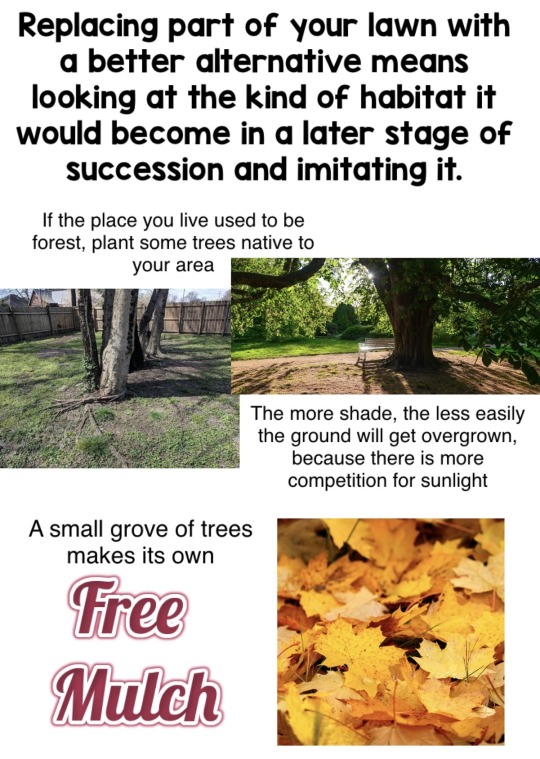

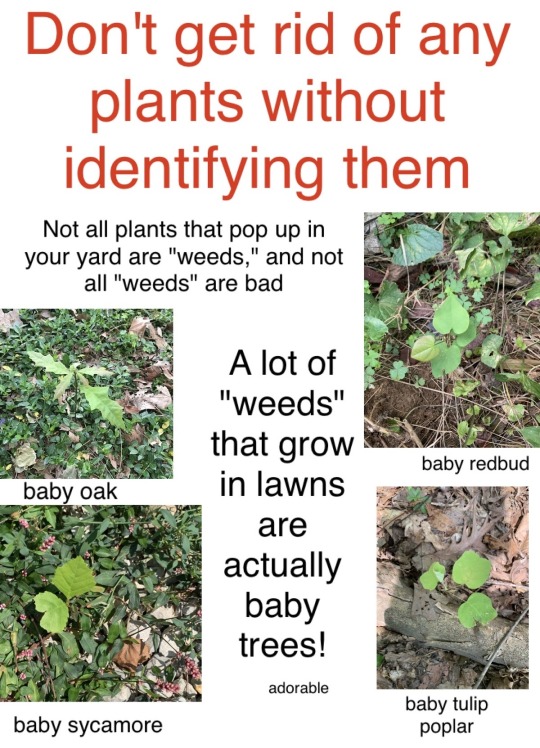
I...tried to make a meme and got carried away and made A Thing that is like partially unfinished because i spent like 3 hours on it and then got tired.
I think this is mostly scientifically accurate but truth be told, there seems to be relatively little research on succession in regards to lawns specifically (as opposed to like, pastures). I am not exaggerating how bad they are for biodiversity though—recent research has referred to them as "ecological deserts."
Feel free to repost, no need for credit
214K notes
·
View notes
Text

Morphological differences between thorns, spines, and prickles
83K notes
·
View notes
Text
I am learning to imagine the future:
My sycamore tree began life in the gravel at the edge of a parking lot. If trees can feel pain, that is a painful, unlucky death. I carefully dug it up and put it in a pot I made out of a disposable cup.
Hello small one. This world may be cruel, but I will not be.
I decided to take care of it, not expecting it to survive, and when my sycamore tree unfurled one tiny leaf and then another, it chiseled a tiny foothold in my terrified brain, the kind of brain that doesn't remember a world before the atomic bomb and before 9/11.
I googled the lifespans of trees. My neurons had to stretch and expand to accommodate what I learned: My sycamore tree may live five hundred years. It's hard to think something so big. In twenty years, my baby sycamore tree will be three stories tall, and the home of many creatures. In five years, my sycamore tree will be taller than I am. In one year, it will be summer.
There's this concept called sense of foreshortened future where people who have lived through trauma can't conceptualize a future for themselves because deep down they don't expect to survive, When I look forward, all I see is fire and death, melting ice and burning sky. We were raised Evangelical. All we see is Judgment Day, except there is no heaven.
But now there is a tiny gap in the wall, a crack in the door of my cell
and on the other side, I see a tree
There is, in the future, a great old sycamore tree, full of clean winds and the stir of a thousand wings. A hundred years from now. Fifty years from now. There will be forests in that world. There will be a world.
It takes courage, but we have to imagine it.
Most tree species can live in excess of three or four hundred years. I think I'm learning something. I think there are ancient voices saying hello small one, touch the dirt and the leaves, for now you are part of something that cannot die
in 2030 I will be thirty years old and the world will not have ended and there will still be hummingbirds, and we will have photos of the stars more beautiful than we can now imagine.
I planted an Eastern Redcedar; they may live nine hundred years. There will be nine hundred years. The people in that time will remember us. Maybe we will meet the aliens (hi aliens!).
I will blow out the candles on many birthday cakes in a world where there are wolves in dark forests far from home. I am learning to imagine the future. I learned recently that elk were reintroduced to the Appalachian Mountains after over a hundred years of extirpation, and that they are expanding their range.
That tiny crack I can see through now opens a tiny bit more:
Maybe elk will pass through my hometown, maybe there will be a forest where the pasture is on the high hill that I can see from my home
say it, say it, say it: ten years, thirty years, a hundred years from now
I am learning to imagine the future. There is a crack in the wall of this prison, of this machine, of this darkness, and through it, I see a tree.
31K notes
·
View notes
Text
📢 Take action for nature by taking no action!

40 notes
·
View notes
Link
Traditionally, it has been assumed that cultivating food leads to a loss of biodiversity and negative impacts on an ecosystem.
For the study, researchers looked at 28 urban community gardens across California over five years and quantified biodiversity in plant and animal life, as well as ecosystem functions such as pollination, carbon sequestration, food production, pest control, and human well-being.
“We wanted to determine if there were any tradeoffs in terms of biodiversity or impacts on ecosystem function,” says Shalene Jha, an associate professor of integrative biology at the University of Texas at Austin, and lead author of the study in Ecology Letters
“What we found is that these gardens, which are providing tremendous nutritional resources and increasing well-being for gardeners, are also supporting incredibly high levels of plant and animal biodiversity. It’s a win-win.”
Continue Reading
248 notes
·
View notes
Text
Y'ALL I FOUND A GOOD PLANT WEBSITE
37K notes
·
View notes
Text
Can't afford to buy things for your garden?
*Re-posting, with new information
A store-bought bag of topsoil, a roll of landscaping fabric, or a bag of cedar chips doesn’t go very far if you have a large garden or a very limited budget. Here are some ways to create the materials you need for a beautiful, organic, productive garden, by both re-directing household waste, and foraging in your local area. I use a lot of these tricks in my garden to make it almost completely free for me to continue growing new things, and expanding the workable area every year!
For soil
Save your food scraps to create a rich compost for growing veggies and amending your soil. There are numerous options for every size of dwelling and yard. Small space solutions such as Bokashi and vermicompost work indoors and don’t produce bad smells, so you can keep them underneath the sink.Worm towers, compost heaps, and outdoor compost bins are a great solution if you have more space. The more you add, the more rich, nutritious material you can make for your garden. I like composting because it means I don’t have gross smelly garbage bags to deal with, because food waste is diverted. It seems like a lot of work at first, but it actually saves time, money, and transportation.
Seaweed or kelp is one of the best things for your garden, with over 70 essential nutrients, and acting as a weed barrier and a moisture-retentive mulch. I collect seaweed nearby on the beach with my bike trailer, or, when I go for a walk I bring a little home with me each time. It’s an absolute miracle for your soil.

Worm tower
Fertiliser
There are three things that are essential for plant growth. These are nitrogen for leaves and vegetation (N), phosphorus for roots and shoots (P), and potassium for water movement, flowering, and fruiting (K). Commercial fertilisers will give the relative concentrations of each of these compounds with and “NPK” rating. Plants like tomatoes also need calcium to produce healthy fruit. You can create amendments for your garden and soil at home so that you do not have to purchase fertiliser.
For nitrogen
Grass clippings contain 4% nitrogen, 1% phosphorus, and 2% potassium (NPK = 4-1-2).
Human urine contains 12% nitrogen, and it’s sterile. Dilute before adding directly to plants.
Legumes such as beans, clover, peanuts, and alfalfa fix inorganic nitrogen into the soil with mycorrhizal organisms and nodules on their root systems. Plant these crops every few years in rotation with others to renew the soil organically.
For phosphorus
Human urine is also a great source of phosphorous and trace amounts of potassium.
Ground up bones or shells add a slow-release phosphorous to the soil
Had a baby recently? Bury the placenta in the garden.
For potassium
Hardwood ashes
Composted banana peels
For calcium
Break down all of your eggshells, or seashells you have found, in a plastic bucket, using vinegar. This creates a soluble calcium solution you can add to a watering can.
Soil Acidity/Alkalinity
Many plants are particular about what the soil pH should be.
To make soil more acidic: add oak leaves, pine needles, leaf mulch, urine, coffee grounds or sphagnum.
To make soil more alkaline: add wood ash, shell, or bone.
Mulch
Mulch is decomposing organic matter that adds nutrition to the soil, while simultaneously keeping out weed growth and retaining moisture. It also attracts worms, fungi and other beneficial creatures to your soil. Free sources of mulch include:
Leaves
Garden waste
Grass clippings
Straw (often straw bales are given away after being used for decoration in the fall. You can also plant vegetables directly in straw bales using a technique called straw bale gardening).
Wood chips (if you can borrow a wood chipper after you’ve collected some wood you can have attractive wood mulch for free)

Straw bale garden
Landscaping fabric
When mulch isn’t enough to keep the weeds down, many people opt for landscaping fabric. It can be quite expensive and inorganic-looking. Free solutions that both attract worms and can be replaced in small segments as they break down include:
Newspaper*
Cardboard*
Egg cartons*
Printer paper, looseleaf, etc. in thick layers*
*try to make sure you are using paper that has vegetable-based dyes, so you aren’t leeching toxins into the soil.
Soil density/drainage
If your soil is compacted and you have plants that require low levels of water, or excellent drainage, add sand. I don’t recommend stealing it from the beach, but ask around and you’d be surprised at how easy it is to get for free. Sawdust also improves drainage. Adding organic matter and mulch encourages worms, who also till and aerate compacted soil.
If the area still needs drainage, dig a hole and fill it with bricks or rocks to create a “dry well”
For drainage in pots, add crushed bricks, terra cotta pot fragments, packing peanuts, small stones, marbles, orsand to the bottom under the soil layer. I find these in construction sites, on craigslist, or at flea markets.
Pots and growing containers
If you have space, raised beds are a great no-dig way to establish growing space. If you are pressed for space (like working on a balcony) there are many cheap or free options for container gardens.
Creating raised beds allows you to build up the soil without digging. Free ways to do this include using rocks or lumber (like my DIY “lasagna garden” made with the sheet composting technique), using the “wattle“ method with sticks and posts you have found, using discarded straw bales, old bricks,paving stones, cinder blocks or really anything else you have lying around.
Hugelkutur raised beds, which fix carbon and provide drainage, can be made by stacking sticks and untreated wood, and then piling soil or compost over it. (Thanks milos-garden)
Rubber tire gardens retain heat in the night and allow for great drainage. They can also be painted in fun ways.
Herb spirals (here is mine: 1, 2, 3) can be built with stones, bricks, and other found materials.
I often use old cooking pots, barbecues, teapots, or other found objects as planters.
Making wooden planters is easy, and scrap or salvaged wood is also easy to come by. I’m not a fan of using wooden pallets for DIY projects, but they are also a free source of lumber for things like planters.
If you can track down peat moss, cement, and vermiculite, you can make an easy Hypertufa planter in whatever shape you would like, provided you have a form in which it can dry.
I’ve made hanging gardens out of soda cans.
You can build a self-watering container with a 2L pop bottle.
Start seeds in eggshells
Make biodegradable pots out of newspapers.

Wattle raised beds

Rubber tire gardens

Hugelkultur

An herb spiral


Hanging gardens in cans (2)
Trellises and supports
Many plants need external support, such as stakes of trellises, to thrive.
Rebar can almost always be salvaged cheaply or free and makes a great trellis, arch, or purgola
Build trellises and supports out of the pliable young stems of plants like willow

Rebar trellis/arch

Living willow arch/trellis
Paving
Paving often requires a foundation of sand or another stable and well-drained substrate, and a covering of stones, bricks, or other weatherproof elements. Slowly collect stones over time, or free paving stone fragments to create a mosaic-type walkway. Often people give these things away on craigslist. I made a patio and fireplace out of free salvaged bricks, for example.

Salvaged garden walkway
Greenhouses and cold frames
Here is a gallery of greenhouses made out of salvaged windows and doors
A cold frame is easy to make with salvaged lumber, and plastic sheeting.

Window greenhouse

Palet cold-frame
Seeds and plants
Swap seeds with other gardeners
If you see a plant you like at someone’s house, ask for seeds or cuttings
Save seeds every year and build a library of options. Here is a great guide to seed saving.
Save seeds from foods you like from the grocery store: consider growing peanuts, ginger, garlic, peppers, or a walnut tree: all of these and more can be planted from store-bought produce.
Learn to take cuttings. There is a tonne of info on the web about basic cutting propagation, layering, (like I do with rhododendrons) air layering, and numerous other techniques to take clones of plants you like. This saves going to a nursery and shelling out big bucks for all the variety you want.
For cuttings, willow tea and honey are great rooting hormones/antiseptics/anti-fungal agents, which can save you $40 if you were thinking of buying commercial rooting hormone.
You can root cuttings in a potato! (See my methods for rooting “borrowed” plants here)

Air layering

Rooting cuttings in potatoes
—-
I hope this helps you build your garden outside of the usual capitalist channels! It can be a cheap or free hobby if you are willing to think outside the box, and maybe put up with things that don’t look as clean or crisp as a hardware store catalogue. If you have any further ideas, please add them! The more information the better.
43K notes
·
View notes
Text
nothing hits the spot like sitting still with your arms crossed and looking around and not talking
62K notes
·
View notes
Text
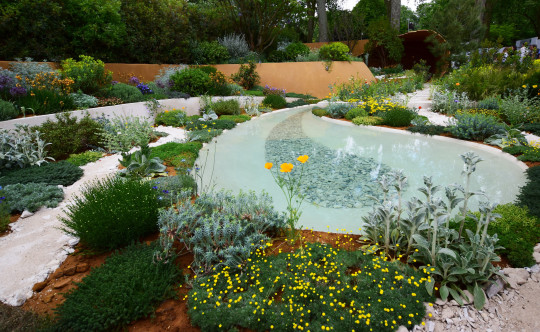
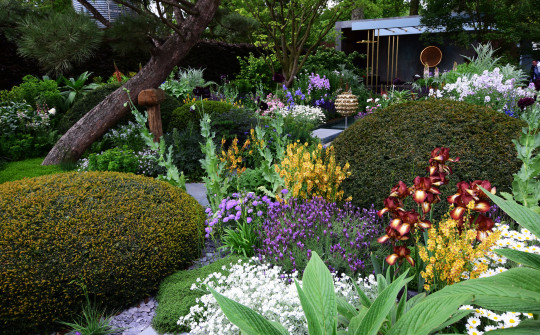
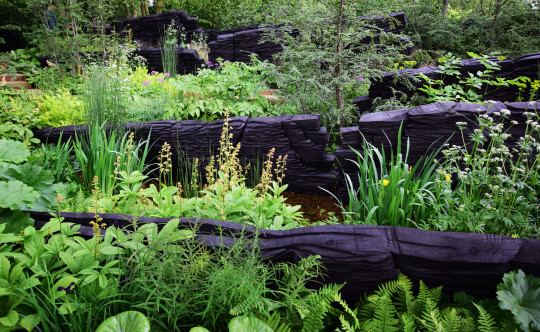
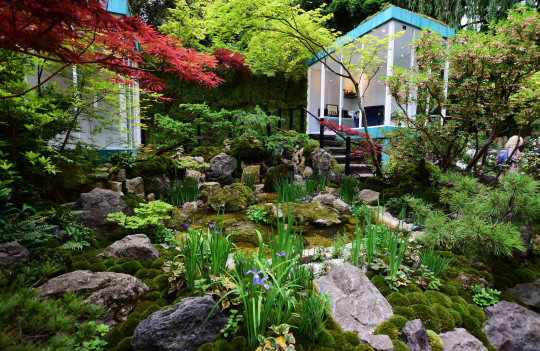
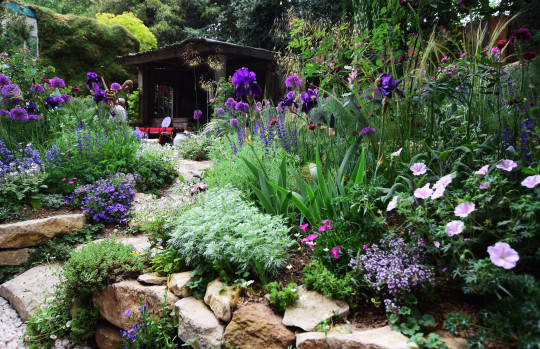
RHS Chelsea Flower Show, 2019
2K notes
·
View notes
Text
sometimes I forget orchids grow on trees and I’m like. oh.
66K notes
·
View notes
Text
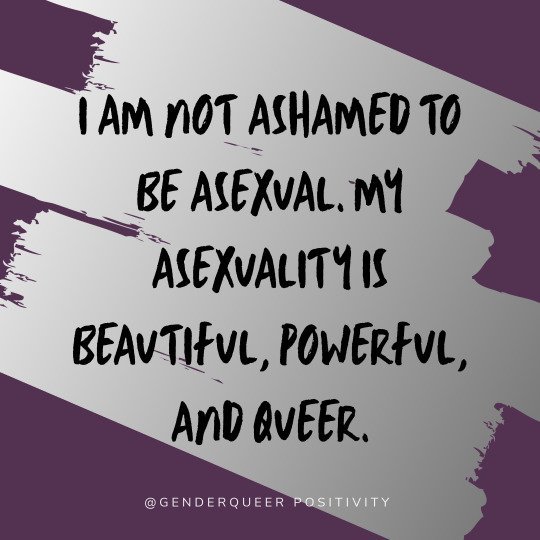
(ID: a gray and white shape over a purple background, black text in the center of the image says "I am not ashamed to be asexual. My asexuality is beautiful, powerful, and queer.")
2K notes
·
View notes
Text
everyone needs to slowwww down and look at a fucking tree
136K notes
·
View notes
Text
“An estimated 1 billion small sea creatures – including mussels, clams and snails – died during the heat wave in the Salish Sea […].”

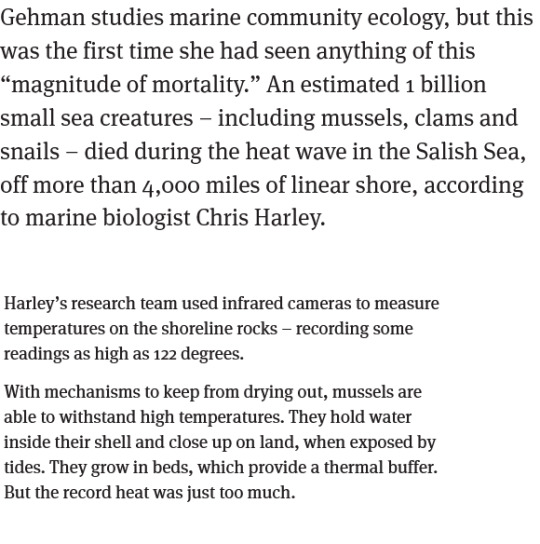
8K notes
·
View notes
Photo
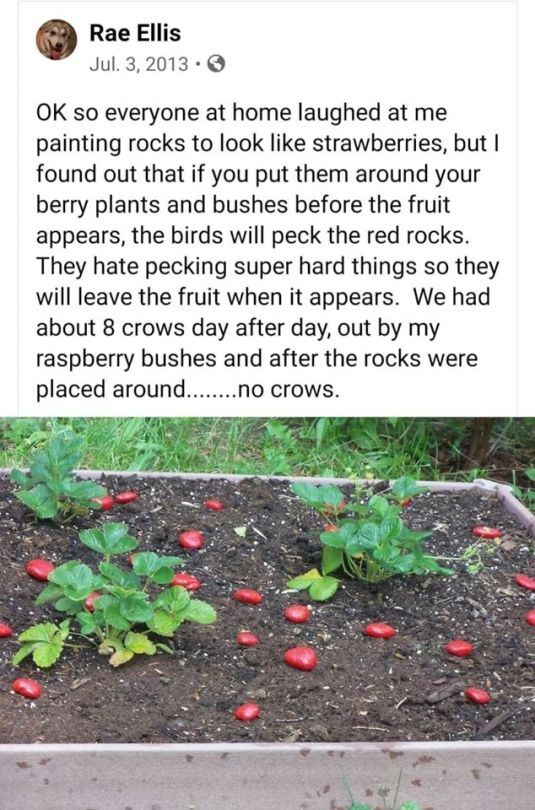
#not mime#im going to try this#it seems like a good idea#tips#gardening tips#gardening#gardenblr#garden
185K notes
·
View notes
